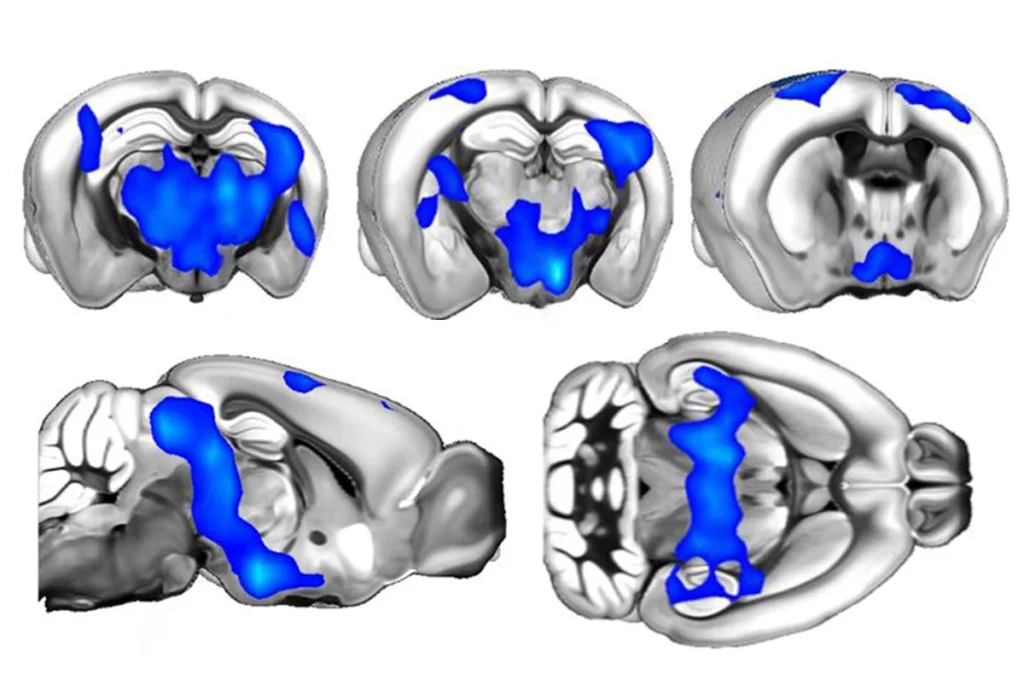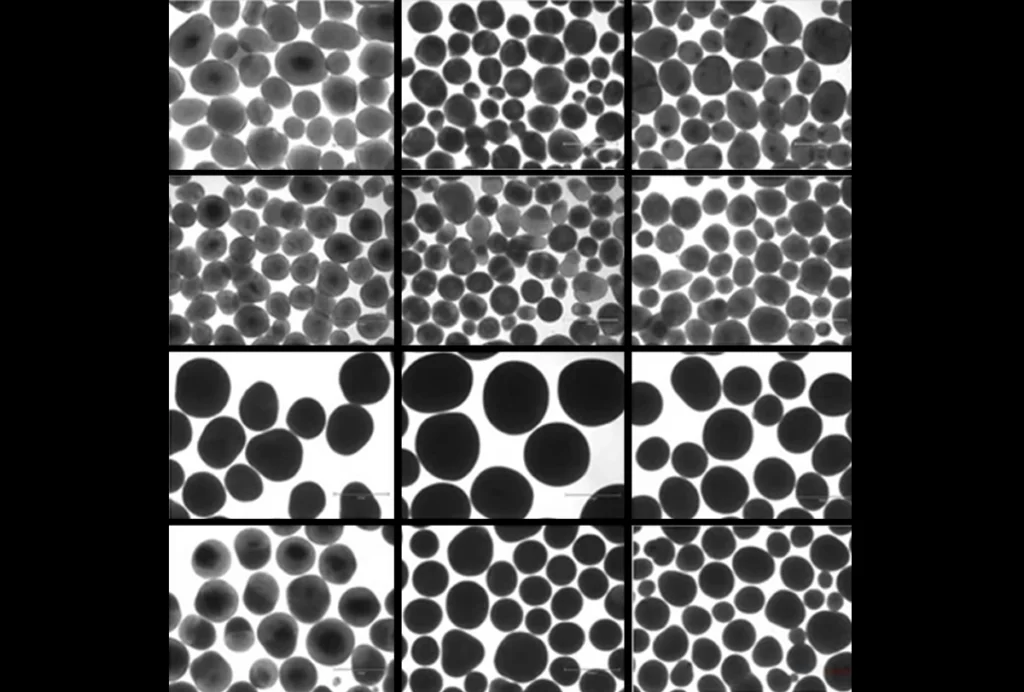Search for autism biomarkers turns to saliva
The saliva of roughly two-thirds of people on the autism spectrum contains abnormal chemical variations in small proteins, called peptides, according to a study published in the December issue of the Journal of Proteome Research.
The saliva of roughly two-thirds of people on the autism spectrum contains abnormal chemical variations in small proteins, called peptides, according to a study published in the December issue of the Journal of Proteome Research 1.
If the results are validated in larger samples, they could eventually be used to develop a saliva test for autism, say the researchers. But fishing for such biological indicators ― called biomarkers ― and what they mean, particularly for behaviorally diagnosed disorders such as autism, is not easy.
The hunt for a single biomarker has not panned out yet because few have been specific to autism, and even those that are specific vary widely among individuals with autism, says Andrew Zimmerman, director of medical research at the Center for Autism and Related Disorders at the Kennedy Krieger Institute in Baltimore.
Thatʼs because autism does not have only a single underlying biological cause.
“It is probable that autism is a common expression of a number of different abnormalities that can occur during brain development,” Zimmerman notes.
In the past few years, new funding initiatives and a surge in technologies have allowed researchers to chemically screen the body fluids of people with autism for large numbers of proteins, genes, immune factors and other molecules. Scientists have done this kind of screening since the early 1980s, but more of it is being done, and with greater numbers of participants and types of molecules.
So far, researchers searching for biomarkers of autism have looked in the blood rather than in saliva because most potential biomarkers are present in higher concentrations in blood. But saliva is easier to collect and usually less expensive to screen.
In the new study, the researchers used analytical chemistry techniques to detect 140 different peptide components in human saliva.
Analyzing saliva from 27 children with autism and 23 healthy controls, the researchers found that for several peptides ― statherin, histatin 1, and two different forms of acidic proline-rich proteins ― the levels of attached phosphate chemical groups are significantly lower in the autism group than in the control group.
The importance of the reduced numbers of attached phosphate groups, or phosphorylation, in the peptides is unclear, says lead author Massimo Castagnola, a professor at Université Cattolicaʼs Institute of Biochemistry and Clinical Biochemistry in Rome.
Before validating the findings in larger numbers of participants, the researchers are conducting animal and cell-culture experiments to determine whether the same abnormal phosphorylation occurs in other cell types, including brain cells.
The researchers also plan to determine the chemical structure of the kinase enzyme ― the molecule responsible for the abnormal phosphorylation, Castagnola says.
“After characterization of the kinase, and a better comprehension of the molecular mechanism, perhaps ― we hope ― that the molecular design of the disease can bring therapy,” he says.
Rare samples:
In 2001, researchers at the University of California, Davisʼ M.I.N.D. Institute set out to find the first biomarkers for autism, probing the blood for immune factors and other proteins specific to children with autism. They had expected to reveal at least one autism biomarker within five years.
But because autism is a heterogeneous disorder, no one biomarker stood out, says David Amaral, a professor of psychiatry and behavioral science at the M.I.N.D. Institute.
“The approaches gave us hints that subsets of children in our sample had interesting potential markers,” he says. “The problem was, when you looked at all those samples in a group, just like in genetics, you lost statistical power.”
To increase statistical power, the researchers have since grouped children with similar behavioral or biological features of autism, such as seizures or certain patterns of electrical activity in the brain.
“We came out of that early phase thinking we had to phenotype the kids better,” Amaral says. “Thatʼs what weʼve been doing.”
Since 2006, Amaral and others have been working on the Autism Phenome Project, a longitudinal study of hundreds of children with autism and developmental delays, as well as healthy children of similar ages. The researchers are defining behavioral and biological characteristics of the children by analyzing, among other things, their genes, environmental exposures and blood proteins.
The full panel of data wonʼt be available for another year, Amaral says.
The project, and others like it, could prove invaluable for researchers like Jun Tan, an associate professor of developmental neurobiology at the University of South Florida in Tampa. Tan says the lack of pooled research data has limited his own attempts to find autism biomarkers.
Last October, Tanʼs group found that 60 percent of children with autism have significantly higher levels of a protein called secreted amyloid precursor protein-alpha (sAPP-alpha) in their blood compared with blood from age-matched controls2.
When Tan wanted to investigate whether sAPP-alpha levels could signal early signs of autism ― an experiment that requires assessing blood samples from children before diagnosis ― he could only find one umbilical cord blood bank, formed for the Autism Birth Cohort study at the Norwegian Institute of Public Health, whose samples linked to longitudinal clinical data. But the study’s principal investigators, researchers from Columbia University in New York, wouldnʼt share their data, Tan says.
“They wished to test their biomarkers first since their resources are limited,” he says.
After looking at 140 cord blood samples with unknown clinical histories from Saneron CCEL Therapeutics, a Tampa-based biotechnology company, Tanʼs group identified elevated levels of sAPP-alpha in 10 of those cases.
“That percentage is interesting,” Tan says, because it is higher than autism’s incidence of 1 in 150 cases. But until he can access a cord blood bank linked to clinical histories, he can only speculate about what that result means.
“It’s quite possible that sAPP-alpha elevation could link to other conditions, such as Down syndrome,” he says.
Mixed results:
Even for researchers with access to the necessary data, validating potential biomarkers has proven challenging.
For example, some researchers had hoped, based on previous studies of postmortem brains and neonatal blood samples, that brain-derived neurotrophic factor (BDNF) ― a small protein thought to alter the formation of new synapses ― could serve as a biomarker. But studies on BDNF have met with mixed results3.
Of six studies performed since 2004, four found higher BDNF levels, two found lower BDNF levels, and one found no difference in BDNF levels between people with autism and healthy controls.
Last April, researchers involved in the Early Markers for Autism (EMA) study, a collaborative project funded by the National Institute of Mental Health, analyzed BDNF in blood collected from mothers during mid-pregnancy and their babies immediately after birth. The researchers found no connection between abnormal BDNF levels and the occurrence of autism, developmental delay or mental retardation[^3].
“Itʼs not surprising, in a sense, that the findings have been inconsistent,” says Lisa Croen, a research scientist at Kaiser Permanente in Northern California, and leader of the EMA project.
Participants across studies may differ in age and autism behaviors, and research groups may use different technologies to analyze the blood, Croen notes.
“The problem is that when you have inconsistent methodologies and study populations and so on, itʼs hard to interpret what those inconsistent findings mean,” she says.
“If you keep coming up with a consistent answer then you can say ‘Aha! This factor may be really important’.”
Although many biomarker studies have churned up false positives, and no one knows where the next potential biomarker will come from, experiments like Castagnolaʼs aimed at initial discovery are still valuable, Zimmerman says.
“The great value in such studies is that they can begin to define some of the biochemical and cellular pathways that are affected in some, if not all, children with autism,” Zimmerman says.
References:
Recommended reading

Building an autism research registry: Q&A with Tony Charman

CNTNAP2 variants; trait trajectories; sensory reactivity

Brain organoid size matches intensity of social problems in autistic people
Explore more from The Transmitter

Cerebellar circuit may convert expected pain relief into real thing

